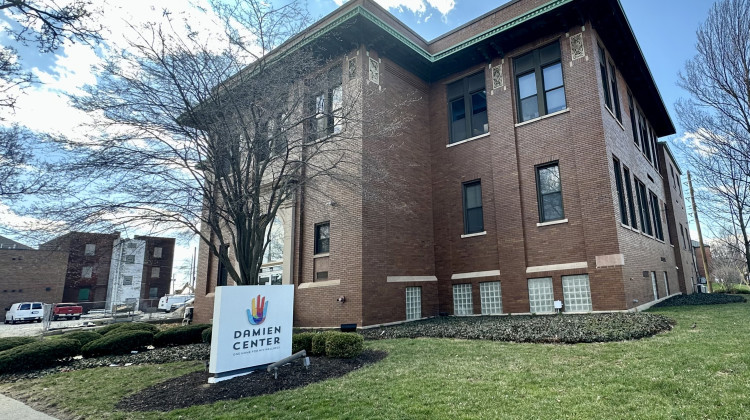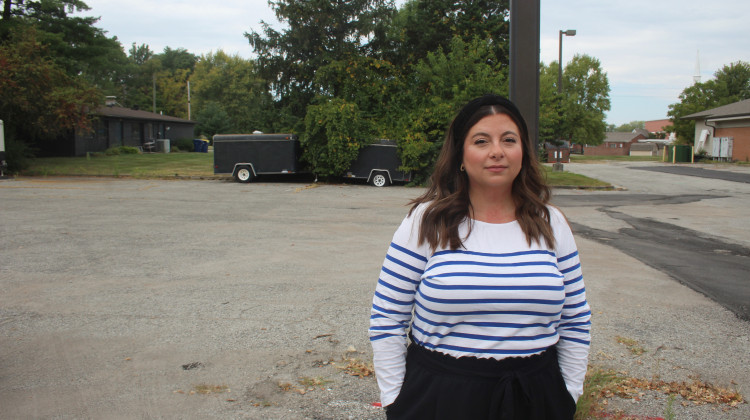
A Mann family farmer dumps freshly harvested corn kernels from a hopper truck into underground conveyor belts that feed storage bins at White Oak Farms in Cloverdale.
Annie Ropeik/IPB NewsIndiana grain farmers are hustling to keep up with harvest as fall progresses.
The soybean crop is on pace with the five-year average as of this week, according to the USDA. But corn is less than half harvested, which is well below average for this time of year.
That’s put large operations like White Oak Farms in Putnam County under the gun to get their corn out of the field before it spoils.
At White Oak, three generations of Mann family members and employees farm 8,000 acres of corn and soybeans in and around Cloverdale.
Farms this size help make Indiana a top 10 state for corn and soybeans.
“What I like about farming is that I get to work with my family every day … I especially work closely with my father,” says 25 year-old Courtney Mann as she surveys a newly-harvested cornfield. “And it’s just great to see all the hard work you put in throughout the year coming to fruition.”
But this year’s wet spring and warm fall have made the corn harvest long and difficult.
Mann says it’s meant 12- or 14-hour days in these fields, driving big vehicles like the combines that chew the corn cobs off thousands of rows of dry stalks.
The combines strip the kernels off those cobs, dump them into auger wagons, then semi-trucks, and send them up the road to the huge silver grain bins that tower over the Manns’ farmhouse.
From there, the corn will feed the Manns’ hogs, or get sold for processing into ethanol. Courtney Mann says the question is when.
“This goes back into the markets,” she says, as she watches her brother-in-law transfer golden corn kernels from a semi-truck – driven by her father – into the grain bins. “Is it corn or soybeans that shows a greater return for selling at harvest, or storing and selling into the summer?
“So it’s a big puzzle that goes all together,” she says.
It’s a puzzle that will repeat in fields all over the state and the Midwest, through this harvest and into the next.
 DONATE
DONATE







 Support WFYI. We can't do it without you.
Support WFYI. We can't do it without you.